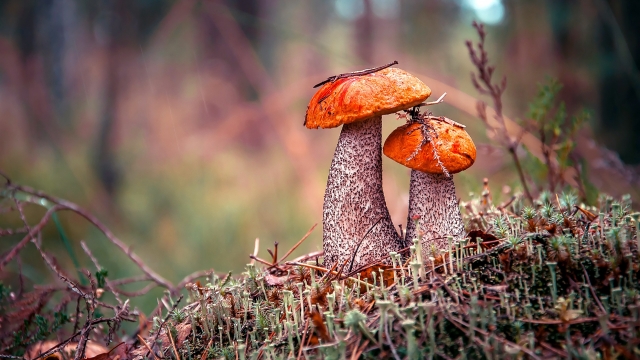
Mushroom growing is an ancient practice that has recently gained popularity as people seek to reconnect with nature and explore sustainable methods of food production. From humble origins as spores, mushrooms have the remarkable ability to transform into vibrant, nutritious blooms that captivate the senses. In this article, we will delve into the fascinating world of mushroom cultivation, unveiling the secrets of successful growth and the undeniable magic that unfolds along the way. Whether you are an aspiring gardener or simply intrigued by the wonders of nature, join us on this journey as we uncover the enchanting process of cultivating mushrooms from start to finish.
Choosing the Right Mushroom Species
When it comes to mushroom growing, choosing the right mushroom species is key. The species you select will determine the flavor, texture, and overall success of your mushroom cultivation journey.
Firstly, consider your taste preferences. If you are a fan of earthy, robust flavors, then the Cremini or Portobello mushrooms might be perfect for you. These species have a meaty texture and are great for dishes like stir-fries, stews, or even grilled as a burger patty substitute.
Alternatively, if you prefer a milder taste, the Button mushrooms are an excellent choice. They are versatile and can be used in various dishes, such as salads, soups, or sautés. Their delicate flavor allows them to blend well with other ingredients.
Lastly, for those looking for a unique and exotic experience, the Shiitake mushrooms are worth considering. With their rich umami flavor, they add a savory note to any dish. Shiitake mushrooms are commonly used in Asian cuisine and are perfect for stir-fries, soups, or even as a tasty topping for pizza.
Remember, the mushroom species you choose will impact not only the taste but also the growing conditions required. So, be sure to do your research and select the right mushroom species for your cultivation adventure.
Creating the Ideal Growing Environment
The success of mushroom growing heavily relies on creating an environment that is perfect for their growth and development. In order to maximize yields and ensure healthy mushrooms, it is crucial to pay close attention to the following factors:
Temperature: Maintaining the right temperature is key to creating an ideal growing environment. Different types of mushrooms have different temperature requirements, but a general range of 65-75 degrees Fahrenheit (18-24 degrees Celsius) is a good starting point. It is important to monitor and regulate the temperature consistently throughout the growing process.
Humidity: Mushrooms thrive in high humidity environments. The humidity level should ideally be around 85-95%. To achieve this, regular misting or the use of a humidifier is necessary. It is important to strike a balance between maintaining high humidity and preventing the formation of waterlogged conditions.
Light: While mushrooms do not require direct sunlight for growth, they do need some exposure to light. Indirect natural light or artificial light sources, such as fluorescent bulbs or LED lights, can be used to provide the necessary illumination. Light helps in the formation of proper fruiting bodies and contributes to the overall vitality of the mushrooms.
Golden Teacher Mushroom
By carefully controlling and optimizing these environmental factors, you can create an ideal growing environment for your mushrooms. Remember to adjust and fine-tune the conditions based on the specific requirements of the mushroom species you are cultivating.
Harvesting and Enjoying the Fruits of Your Labor
After patiently nurturing your mushroom crop through the various stages of growth, it is finally time to reap the rewards of your hard work. The moment when you can harvest your homegrown mushrooms is undoubtedly a satisfying one. However, it is crucial to ensure that you pick your mushrooms at the right time to maximize their flavor and nutritional value.
When it comes to harvesting mushrooms, timing is everything. Different mushroom varieties have specific indicators that signal they are ready to be picked. For instance, if you are growing button mushrooms, you will notice the caps beginning to open slightly, indicating that they are ready for harvesting. On the other hand, oyster mushrooms should be harvested when the edges of the caps start to curl upwards.
To harvest your mushrooms delicately, gently grasp the stem close to the base and give a slight twist or cut with a clean, sharp knife. Avoid pulling the mushrooms forcefully, as this can damage the mycelium and hinder future growth. Remember to harvest only those mushrooms that are fully mature, leaving the smaller ones behind to continue developing.
Once you have successfully harvested your mushrooms, it’s time to savor the delightful flavors that you have helped cultivate. Whether you choose to enjoy them raw, sautéed, grilled, or as a delicious addition to your favorite recipes, the taste of freshly harvested mushrooms is truly unparalleled. The unique textures and earthy aromas will add a delectable touch to any dish, making your efforts in mushroom growing all the more rewarding.
By following proper harvesting techniques and allowing your mushrooms to reach their prime, you’ll be able to celebrate the culmination of your mushroom growing journey. So, embrace the magic of mushroom cultivation and relish the joy of reaping the fruits of your labor. Happy harvesting and bon appétit!


